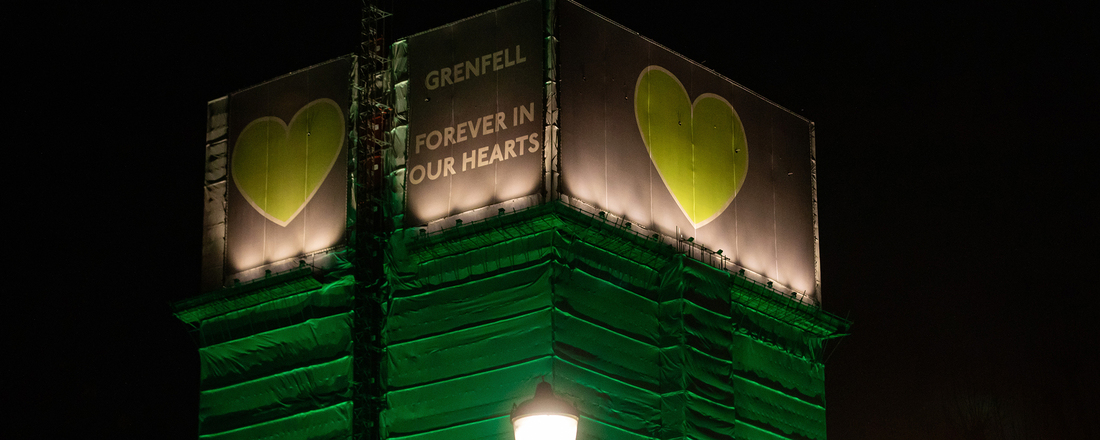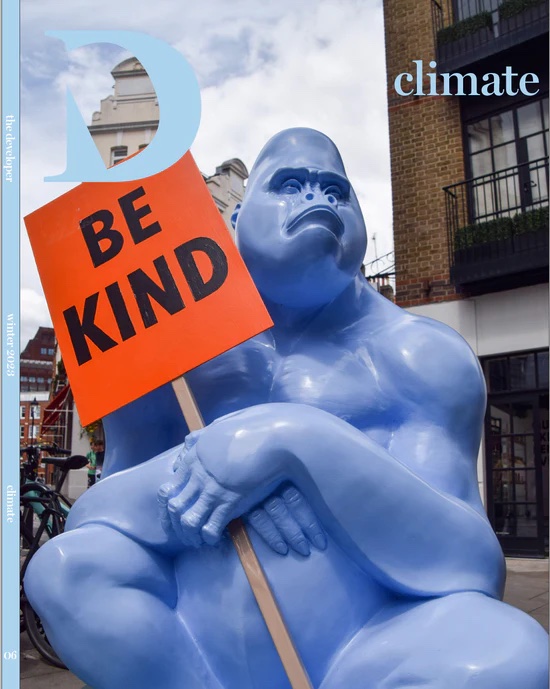Get updates from The Developer straight to your inbox Yes, please!
Grenfell 7 years on: Experts fear more buildings have ACM cladding
Is the number of buildings clad with this uniquely dangerous building product being undercounted? Peter Apps reports on the findings of a Freedom of Information request revealing the number of buildings with ACM

Seven years ago this week, on 14 June 2017, the world woke up to a horrifying sight: Flames engulfing a 24-storey building in which dozens of people remained trapped. Seven years on, while those responsible have not yet been brought to justice, we do at least know a lot more about the factors which turned Grenfell Tower into an inferno.
At the top of the list is the aluminium composite material (ACM) cladding in which the building was wrapped. Between two thin skins of aluminium, the material held polyethylene: a highly combustible plastic with a chemistry similar to petrol. It was this which had ignited and sent flames racing up the building and molten, burning plastic streaming down it.
To anyone who had followed the progression of facade fires around the world to this point, this would not have come as a surprise. By this stage, ACM was well known to be a fire risk and had been linked to major fires in the Middle East, Australia, France and elsewhere.
A Freedom of Information request has revealed that 90 residential medium-rise buildings are clad with ACM – the most dangerous form of flammable cladding. But experts believe this to be an undercount, potentially a substantial one
We now understand the risks of this particular product, particularly when it is bent into a ‘cassette’ shape (with L-shaped edges that can be hung on rails rather than bolted to a building). Test after test have shown the devastating fire performance in this configuration, with one expert at the Grenfell Tower Inquiry describing his own experiments with it as “the most shocking I have ever witnessed after about 15 years of working in these labs”.
Good news, then, that official figures suggest that in high-rise buildings this problem is well on its way to being dealt with. Of 498 high rise buildings identified to have this sort of material in England, 487 have either started or completed the remediation work (98%).
But this would be false comfort. Because ACM was never limited to housing of 18m and up, and not one building type or one country. Instead, millions of square metres of this product have been produced and fitted to buildings globally for decades – and while data is hard to come by, industry sources are convinced it continues to be.
Even in the UK, the focus on buildings above 18m obscures a wider risk. Government figures have identified 4,336 residential buildings of 11m and up with unsafe cladding, of which 1,975 buildings, just 46%, have either started or completed remediation works.
Information released exclusively to The Developer reveals that 90 residential medium-rise buildings are clad with ACM – the most dangerous form of flammable cladding; the number was provided by the Department for Levelling Up, Housing and Communities (DLUHC) in response to a Freedom of Information request.
But experts believe this to be an undercount, potentially a substantial one.
“The cumulative amount that is in the lower-level buildings must be higher than those figures indicate,” says Nick Jenkins, a technical facades manager at Sir Robert McAlpine. Jenkins has had a long career in the facades industry – which included making serious warnings about the use of ACM in the UK in the years before Grenfell.
If DLUHC is unaware of the full scale of ACM on medium rise buildings, that would be a cause for concern
Jonathan Sakula, director of Sakula Consulting, also says he expected a higher number. Sakula, a facades expert with more than 45 years experience in the industry, appeared as an expert witness on the matter at the Grenfell Tower Inquiry, but speaks here in a personal capacity.
“There will be 1000s [of medium rise buildings with ACM] without doubt,” says Dr Jonathan Evans, a facades expert and chief executive of facade and roof manufacturer Ash and Lacy. “And the chances of them being [a non-combustible variety of ACM] are almost zero. If they were built before Grenfell, it’s more than likely they’d be PE.”
If DLUHC is unaware of the full scale of ACM on medium rise buildings, that would be a cause for concern. If one of these blocks is an old-people’s home, for example, or a timber-framed building, then despite its lower height a fire would still pose an extremely serious risk.
Contacted for comment, DLUHC wrote: “Through the Building Safety Act we have established a Building Safety Regulator and strengthened competency standards for design, construction and building control. The Building Safety Regulator is leading a critical change in culture and behaviours across the built environment to create a built environment where everyone is competent and takes responsibility for ensuring that buildings are safe and of high quality.”
“Our thoughts are with the bereaved families, survivors and residents as they remember those who lost their lives in the Grenfell Tower tragedy,” the spokesperson from DLUHC concluded.
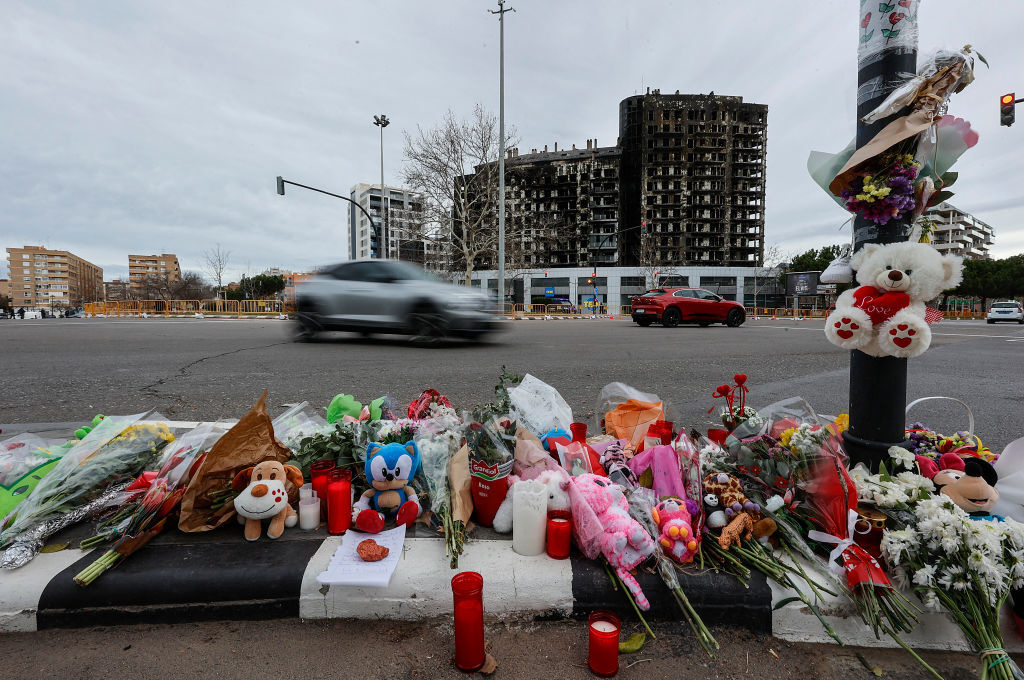
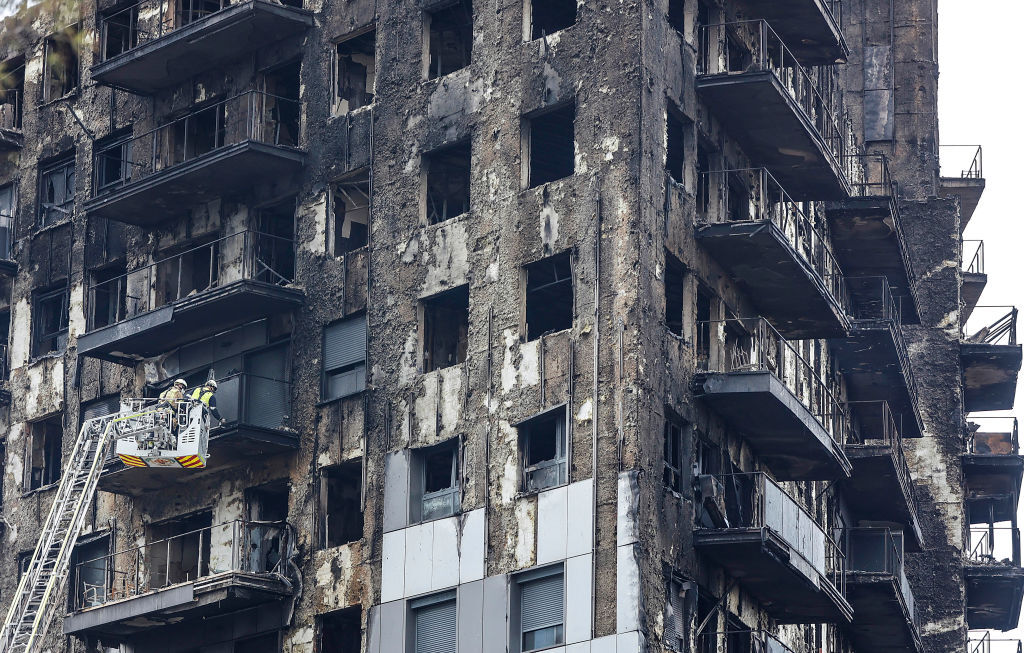
ACM has been a popular building product for decades, particularly since the expiry of its patent in the early 1990s. It is flat and light, easy to work and less prone to bending than solid aluminium. That makes it a frequent choice for the external shell of modern buildings: from leisure centres to seven-star hotels in Dubai.
There is no overall figure for just how much ACM there is out there, but 3A Composites, which makes Alucobond, the market leading and original ACM, estimates that it has sold 130 million square metres of the product globally.
A spokesperson for the company tells the developer that this covers “various building types” and “to a smaller extent high rise buildings”. The figure includes panels with less combustible cores than the pure polyethylene.
The spokesperson adds that it has been “selling only fire-retardant or non-combustible aluminum composite panels for use on high-rise buildings for years” and that it “works alongside regulators worldwide to improve fire safety for buildings”.
3A is the leading company, but not the only one. Arconic (which sold the material for use on Grenfell), confirms to The Developer that it has sold 12.75 million square metres of polyethylene-cored ACM for buildings in total.
“It’s amazing how long it takes countries to actually change their regulations, especially in response to something that happened in another jurisdiction”
Other companies such as Alucoil and Alpolic (part of the Mitsubishi Group of companies) will have contributed many millions of square metres more.
And in most countries, no effort is being made to identify these buildings and address the risks. In Australia - following a large non-fatal ACM fire before Grenfell – various state authorities have cladding remediation programmes actively identifying and fixing dangerous buildings. The government of Sharjah, in the United Arab Emirates is working on a programme to remove cladding from 203 high-rise buildings.
In Dubai, the product has been banned for new builds, and owners of existing buildings have been encouraged to carry out remediation – but are not obliged to.
All of this leaves many, many thousands of buildings around the world where pure polyethylene ACM is still present.
“If you drive around Dubai and Abu Dhabi, almost every building looks as if it has got ACM on it,” says Evans. “It’s not being put up there anymore, but there will be an awful lot of buildings that have not been remediated yet.
Early this year, a building in Valencia, Spain, suffered a huge ACM fire – exacerbated by high winds – in which 10 people died
“And closer to home in Europe, are any countries actually looking for this? Is there any sort of a plan from the EU to find these buildings and fix them? I haven’t heard of anything.”
We know from evidence released at the Grenfell Tower Inquiry that ACM – including in its pure polyethylene form – was sold across Europe for years before Grenfell, despite some countries setting higher standards which ruled it out of higher risk buildings.
The risk of this has been illustrated in the years since Grenfell, first with a devastating ACM fire in Milan, Italy, which thankfully caused no deaths but decimated the building. Early this year, a building in Valencia, Spain, suffered a huge ACM fire – exacerbated by high winds – in which 10 people died.
Worse, as well as a legacy of buildings constructed with ACM, experts believe there are places where it still being installed.
“I’m absolutely convinced, as long as ACM with a PE core is still being manufactured, it will continue to be used for architectural applications in many regions of the world where the regulatory framework is perhaps not as robust or is more open to corruption,” says Jenkins.
One is Alucomaxx, based in Brazil. A spokesperson for the firm tells The Developer that the firm “complies fully with local laws and do not supply PE core panels for architectural use where it is prohibited”. The spokesperson adds that Alucomaxx has been a pioneer in producing more fire safe versions of the product for use in the Latin American market.
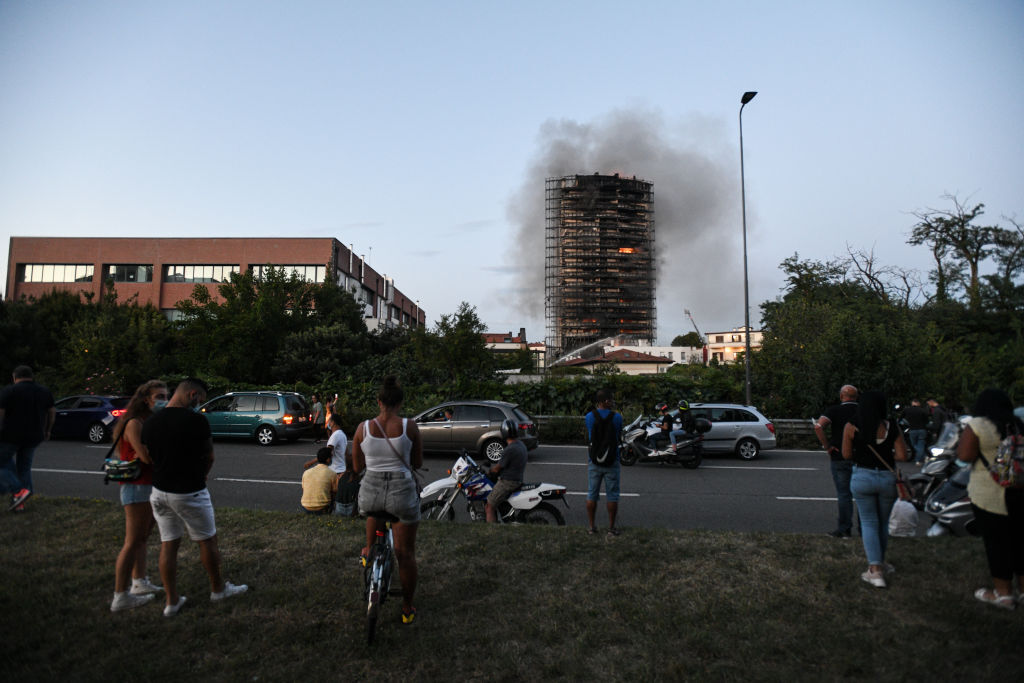
Jenkins believes some manufacturers will be reluctant to absorb the cost of switching their production lines to a less combustible core while a market remains open for polyethelene core product.
“Those production lines are set up and running and it’s an expensive process to convert a line from polyethylene core to a less combustible core,” he says.
“The speed that the lines run at is different, so you can get a lot more volume off a polyethylene line in a set amount of time than you can for the other alternatives. And in a highly competitive market, that makes a huge difference. So while this price differential exists, then I think that they’ll still have the incentive to keep producing the polyethelyne product.”
“I would imagine the manufacturers who have found they no longer have a market in some countries are looking for new ACM PE markets and they naturally target those countries with looser regulation,” says Sakula. “It’s amazing how long it takes countries to actually change their regulations, especially in response to something that happened in another jurisdiction.”
“My main fear is that this issue with the most popular reaction to fire classification system we have in the world still has this loophole in it, and that’s going to lead to death”
Discussing the risk of the product, he adds: “The only environment where you could see it as being a safe material will be an environment where the consequences of a fire are not so serious. So, for example, a signboard, but even then it depends where it is located.”
Indeed, some evidence of its danger globally was referred to in emails disclosed to the Grenfell Tower Inquiry. In one, a member of staff at 3A discussed the product being sold by a competitor company in Thailand – a product which claimed to be fire retardant, but actually “turns out to be recycled PE core burning like paper”.
“Half of the country is full of this rubbish due to price,” he wrote. “We have taken random samples and done a live test in Bangkok in front of architects, they almost fainted. Indeed, this panel is a whole cheat and burns fiercely.”
As far as we know, nothing has been done to locate products like this and get them off people’s homes before they result in more death.
Vast amounts of the material are also produced for use in the signage and corporate identity industry, typically with thinner skins of aluminium, 0.3mm and an overall thickness of 3mm. But Mr Jenkins believes it is inevitable that some of this material is making its way onto building envelopes due to cost pressures or poor regulation.
“If this material is available for those applications, then it’s pretty reasonable to consider that in regions with developing economies such as Northern Africa, South America or India for example, perhaps this material is making its way onto the external walls of taller buildings,” he says.
One way to start cleaning up the legacy of dangerous ACM used around the world would be to ask manufacturers to share the details of where they have sold it
Arconic - which sold the material for use on Grenfell - tells The Developer it stopped selling it for architectural use after Grenfell and for all uses in January 2020. Other companies approached did not respond on this point.
Evans adds that shortcomings in the fire testing regime means ACM can still obtain a ‘Euroclass B’ rating if the edges of the panel are sealed off for the tests. This means it may well still make it to market in many jurisdictions in apparent compliance with the rules.
“My main fear is that this issue with the most popular reaction to fire classification system we have in the world still has this loophole in it, and that’s going to lead to death,” he says.
One way to start cleaning up the legacy of dangerous ACM used around the world would be to ask manufacturers to share the details of where they have sold it.
“The manufacturers know what product they have supplied into the distribution houses, who will in turn know where and to who they have supplied it for fabrication. And the fabricators will be very much aware of who they have sold their panels to. So that’s a matter of record somewhere,” says Jenkins.
The Developer asked several large ACM producers what they had done to alert former customers. Arconic shared an email it sent to customers after the Grenfell fire alerting them that it had stopped selling the product for high rise sales, while Alucomaxx said it had “implemented robust measures to inform customers about the risks associated with PE core panels”. The other companies either did not respond on this point or did not point to any specific actions.
Evans adds a note of caution however with asking manufacturers to open their books: ACM produced in Chinese factories, for example, may be harder to track down. It may also be more difficult in jurisdictions with less tight requirements for record keeping, or where product substitution has occurred. But it would at least be a start.
And a start, seven years after Grenfell, is really the very least we can ask for.
Peter Apps is an award-winning journalist and author of Show Me the Bodies: How we let Grenfell happen. The book was awarded the Orwell Prize for Political Writing in 2023. Apps is a contributing editor of Inside Housing
From the magazine
This article appears in the Winter 2023 edition of The Developer magazine. To get your copy, you can subscribe by supporting us on Patreon, sign up as an organisation member for a range of benefits including tickets to all our Festival of Place events, or buy a single issue in our shop.
If you love what we do, support us
Ask your organisation to become a member, buy tickets to our events or support us on Patreon
Sign up to our newsletter
Get updates from The Developer straight to your inbox
Thanks to our organisation members
© Festival of Place - Tweak Ltd., 124 City Road, London, EC1V 2NX. Tel: 020 3326 7238
© Festival of Place - Tweak Ltd., 124 City Road, London, EC1V 2NX. Tel: 020 3326 7238
